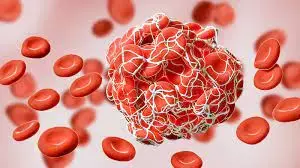- Home
- Medical news & Guidelines
- Anesthesiology
- Cardiology and CTVS
- Critical Care
- Dentistry
- Dermatology
- Diabetes and Endocrinology
- ENT
- Gastroenterology
- Medicine
- Nephrology
- Neurology
- Obstretics-Gynaecology
- Oncology
- Ophthalmology
- Orthopaedics
- Pediatrics-Neonatology
- Psychiatry
- Pulmonology
- Radiology
- Surgery
- Urology
- Laboratory Medicine
- Diet
- Nursing
- Paramedical
- Physiotherapy
- Health news
- Fact Check
- Bone Health Fact Check
- Brain Health Fact Check
- Cancer Related Fact Check
- Child Care Fact Check
- Dental and oral health fact check
- Diabetes and metabolic health fact check
- Diet and Nutrition Fact Check
- Eye and ENT Care Fact Check
- Fitness fact check
- Gut health fact check
- Heart health fact check
- Kidney health fact check
- Medical education fact check
- Men's health fact check
- Respiratory fact check
- Skin and hair care fact check
- Vaccine and Immunization fact check
- Women's health fact check
- AYUSH
- State News
- Andaman and Nicobar Islands
- Andhra Pradesh
- Arunachal Pradesh
- Assam
- Bihar
- Chandigarh
- Chattisgarh
- Dadra and Nagar Haveli
- Daman and Diu
- Delhi
- Goa
- Gujarat
- Haryana
- Himachal Pradesh
- Jammu & Kashmir
- Jharkhand
- Karnataka
- Kerala
- Ladakh
- Lakshadweep
- Madhya Pradesh
- Maharashtra
- Manipur
- Meghalaya
- Mizoram
- Nagaland
- Odisha
- Puducherry
- Punjab
- Rajasthan
- Sikkim
- Tamil Nadu
- Telangana
- Tripura
- Uttar Pradesh
- Uttrakhand
- West Bengal
- Medical Education
- Industry
Anticoagulants and Antidiabetics leading drugs for medication-related ER visits: JAMA

Taking blood-thinners and diabetes drugs at higher-than-recommended doses or in error often leads to health complications that bring older adults to hospital emergency rooms, suggests a study published in JAMA.
A group of researchers conducted a study to describe the characteristics of emergency department (ED) visits for acute harms from both therapeutic and nontherapeutic medication use in the US. Active, nationally representative, public health surveillance based on patient visits to 60 EDs in the US participating in the National Electronic Injury Surveillance System–Cooperative Adverse Drug Event Surveillance Project from 2017 through 2019.
Medications implicated in ED visits, with visits attributed to medication harms (adverse events) based on the clinicians' diagnoses and supporting data documented in the medical record. Nationally weighted estimates of ED visits and subsequent hospitalizations for medication harms.
The results of the study are as follows:
Based on 96 925 cases, there were an estimated 6.1 ED visits for medication harms per 1000 population annually and 38.6% resulted in hospitalization. Population rates of ED visits for medication harms were higher for patients aged 65 years or older than for those younger than 65 years
Overall, an estimated 69.1% of ED visits for medication harm involved therapeutic medication use, but among patients younger than 45 years, an estimated 52.5% of visits for medication harms involved nontherapeutic use. The proportions of ED visits for medication harms involving therapeutic use were lowest for barbiturates (6.3%), benzodiazepines (11.1%), nonopioid analgesics (15.7%), and antihistamines (21.8%). By age group, the most frequent medication types and intents of use associated with ED visits for medication harms were therapeutic use of anticoagulants and diabetes agents for patients aged 65 years and older; therapeutic use of diabetes agents for patients aged 45 to 64 years; nontherapeutic use of benzodiazepines for patients aged 25 to 44 years; and unsupervised medication exposures and therapeutic use of antibiotics for children younger than 5 years.
Therefore, the researchers concluded that according to data from 60 nationally representative US emergency departments, visits attributed to medication harms in 2017-2019 were frequent, with variation in products and intent of use by age.
Reference:
US Emergency Department Visits Attributed to Medication Harms, 2017-2019 by Daniel S. Budnitz et al. published in the JAMA.
doi:10.1001/jama.2021.13844
Dr. Shravani Dali has completed her BDS from Pravara institute of medical sciences, loni. Following which she extensively worked in the healthcare sector for 2+ years. She has been actively involved in writing blogs in field of health and wellness. Currently she is pursuing her Masters of public health-health administration from Tata institute of social sciences. She can be contacted at editorial@medicaldialogues.in.
Dr Kamal Kant Kohli-MBBS, DTCD- a chest specialist with more than 30 years of practice and a flair for writing clinical articles, Dr Kamal Kant Kohli joined Medical Dialogues as a Chief Editor of Medical News. Besides writing articles, as an editor, he proofreads and verifies all the medical content published on Medical Dialogues including those coming from journals, studies,medical conferences,guidelines etc. Email: drkohli@medicaldialogues.in. Contact no. 011-43720751


